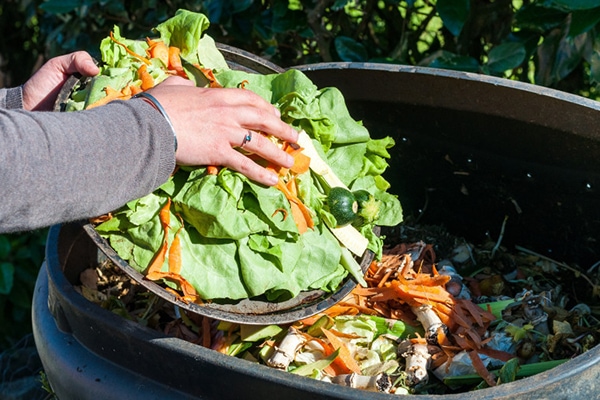The food waste management market is anticipated to be worth US$ 70.0 billion in 2023 and US$ 121.8 billion by 2033. Throughout the forecast period, sales of food waste management systems are anticipated to increase at a CAGR of 5.7%.
According to the United States Environmental Protection Agency (EPA), more than 38 million tons of food waste was generated in 2014, with a mere five percent diverted from incinerators and landfills. EPA estimates that food accounts for 21.6% percent of discarded municipal solid waste generated in the country. Food losses and waste bring to light the inefficiency of food value chains and food systems, which cause a fall in overall food availability.
Discover the Power of Food Waste Management! Get your hands on a Sample Copy with Graphs & List of Figures – Request Now!
https://www.futuremarketinsights.com/reports/sample/rep-gb-2749
The increasing food loss and wastage have led to a growing focus on decreasing the total volume of waste produced while increasing efforts to bring about sustainability in food waste management worldwide. The global food waste management market is anticipated to be valued at US$ 62.6 Bn in 2022. Future Market Insights (FMI) projects that the food waste management market will see a significant CAGR of over 6.4% during 2021 – 2032.
Key Takeaways – Food Waste Management Market Study
- The food waste prevention segment is expected to rank relatively high on the attractiveness index in the global food waste management market. In 2022, the food prevention segment is anticipated to dominate the market.
- Food loss and wastage occurs at each node of the supply chain, from primary production to final end consumption.
- According to FMI survey, it is observed that around 85% to 90% of the overall food wasted in the developing economies is in the supply chain, including producers, processors, distributors, transportation & logistics, and retailer levels. In developing economies, food loss usually occurs in the earlier stages of the supply chain as a result of limited technology, inadequate infrastructural facilities, unfavorable climatic conditions, and insufficient processing and lack of marketing.
- In contrast, developed economies witness food losses and wastage to a substantial extent at the downstream stages of the supply chain.
- In 2019, food processing wastes is estimated to dominate the food waste management market by waste type.
- Rising preference for animal food production from food waste is expected gain traction in the food waste management market in the foreseeable future. Animal Feed, followed by fertilizers, are anticipated to remain the largest end-use segment globally during the forecast period.
- Increase in promotional activities and investments in renewable energy generation are leading to the growing market prospects for food waste management in North America. High demand for renewable energy and development in infrastructure encourages new players operating in recycling and processing food waste market.
Players in the food waste management market could strengthen their positions by introducing services in the rural areas where the concentration of food waste management companies is relatively low.
Technological Developments to Enhance Prospects for Food Waste Management Organizations
Increasing participation of small and mid-size enterprises in the global food waste management market provides opportunities for innovation in services offered by waste management companies. Through the development of innovative technologies such as shelf-life extension technology, companies operating in the food waste management market are able to expand their global footprint by leveraging the regulatory implications.
Purchase now and gain exclusive access to in-depth segment information. https://www.futuremarketinsights.com/checkout/2749
Market Segments Covered in Food Waste Management Industry Analysis
By Services:
- Prevention
- Collection
- Transfer
- Recycling
- Landfill
By Waste Type:
- Food Production Wastes
- Agricultural Produce Wastes
- Fruits & Vegetable Waste
- Staple Grain Waste
- Poultry, Fish and Meat Wastes
- Bovine
- Poultry Meat
- Pork
- Fish & Other Marine Food
- Food Processing Wastes
- Agricultural Produce Processing Waste
- Poultry, Meat and Seafood Processing Wastes
- Dairy Food Processing Waste
- Other Food Processing Wastes
- Distribution and Supply Chain Wastes
- Retail Wastes
- Consumption Wastes
- Household Food Waste
- Food Services, Hospitality & Institutional Waste (FSHI Waste)
By End-use:
- Animal Feed
- Fertilizer
- Renewable Energy & Biofuels
- Others (Cosmetic, Soap, Bio-plastic, and Other Products)
About Future Market Insights (FMI)
Future Market Insights, Inc. (ESOMAR certified, recipient of the Stevie Award, and a member of the Greater New York Chamber of Commerce) offers profound insights into the driving factors that are boosting demand in the market. FMI stands as the leading global provider of market intelligence, advisory services, consulting, and events for the Packaging, Food and Beverage, Consumer Technology, Healthcare, Industrial, and Chemicals markets. With a vast team of over 5000 analysts worldwide, FMI provides global, regional, and local expertise on diverse domains and industry trends across more than 110 countries.
Contact Us:
Future Market Insights Inc.
Christiana Corporate, 200 Continental Drive,
Suite 401, Newark, Delaware – 19713, USA
T: +1-845-579-5705
For Sales Enquiries: sales@futuremarketinsights.com
Website: https://www.futuremarketinsights.com
LinkedIn| Twitter| Blogs | YouTube
